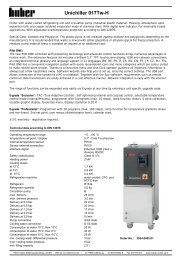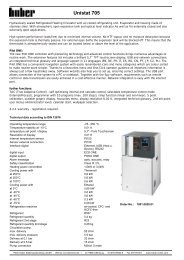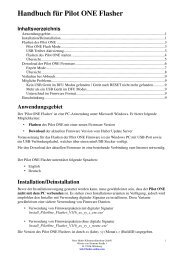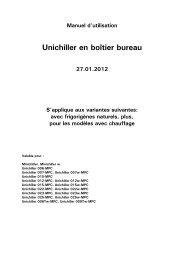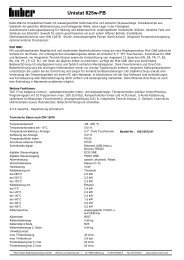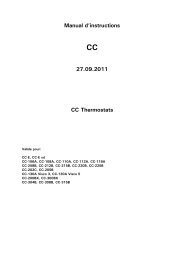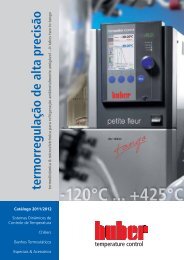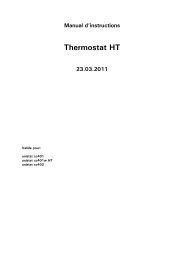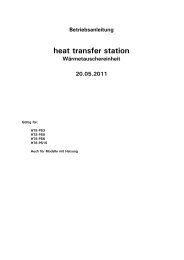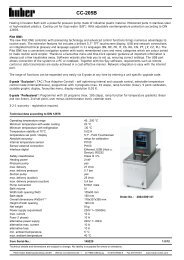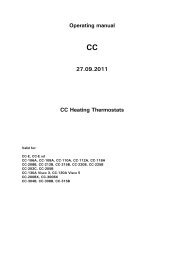Compatible Control - HUBER
Compatible Control - HUBER
Compatible Control - HUBER
You also want an ePaper? Increase the reach of your titles
YUMPU automatically turns print PDFs into web optimized ePapers that Google loves.
Thermal<br />
fluid<br />
Hazards<br />
during<br />
thermo-<br />
regulation<br />
3. Commissioning<br />
3.1 Safety Instructions and Principles<br />
Only non-flammable thermal fluids are permissible for unattended<br />
operation!<br />
Requirements for thermal fluids classified as III / FL:<br />
EN 61010-1: Maximum permissible working temperature 25°C below<br />
the flash point!<br />
Maximum viscosity at the lowest working temperature: 50mm²/s!<br />
Maximum density of the thermal fluid: 1kg/dm³.<br />
Possible thermoregulation range within the range of the planned minimum<br />
and maximum working temperature.<br />
Do not use thermal fluids with any of the additives ether, ester or<br />
amine. Do not use demineralized water, mineral water, sea water or<br />
CaCl2 brines!<br />
Compatibility with the materials of the thermostat (stainless steel<br />
1.4301 (V2A) and Viton) and all materials of the connected application.<br />
A selection of thermofluids and their technical data is to be found in<br />
the current Huber catalogue.<br />
Caution! Potential risk of injury and material damage during thermoregulation:<br />
In the course of operation of the thermostat, extreme changes in temperature<br />
and pressure and the specific characteristics of the thermal<br />
fluids used may constitute hazards.<br />
Please Note:<br />
All the safety instructions are vital and must be considered during<br />
the operation of the unit in compliance with the operating instructions.<br />
17



